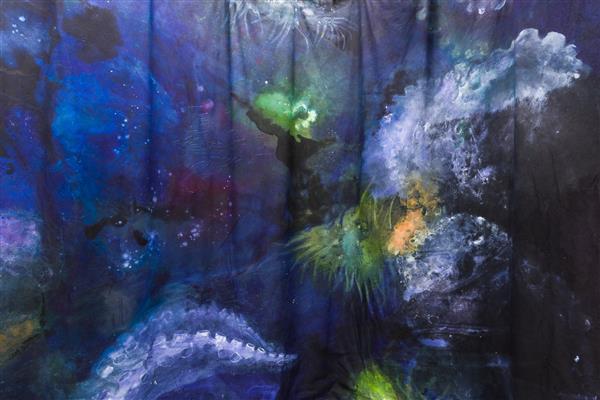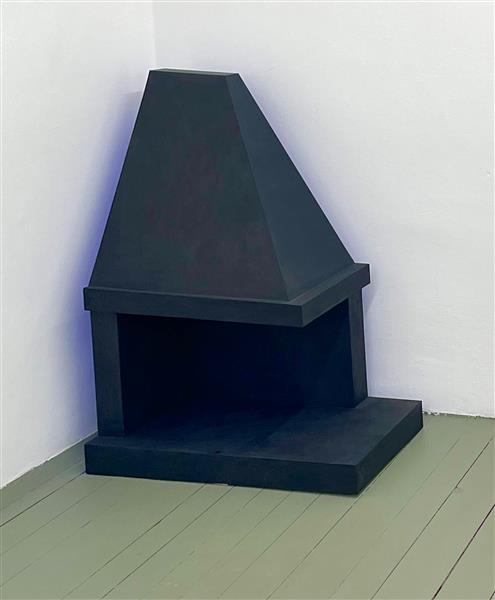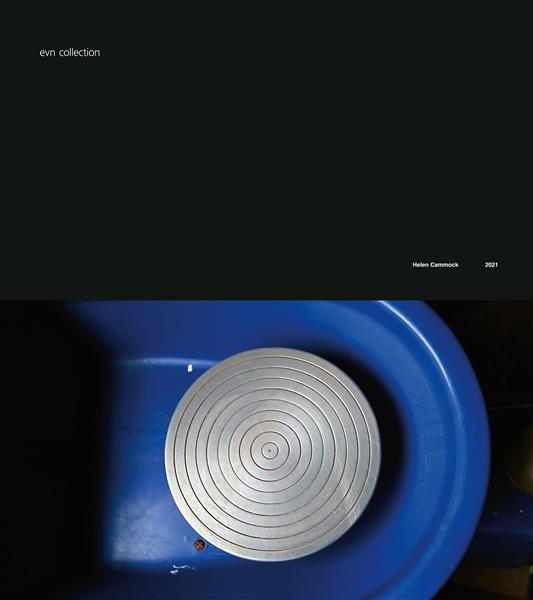Dark verb
Hugo Canoilas
high-fluid-acrylic paint on linen, metal bar
700 × 275 cm
2021
Acquisition 2021
Inv. No. 0438
Hugo Canoilas' work is smart and full of energy; in his hands, old visual techniques blossom into new life, cast-off art languages are rescued through reenactments, spaces become stages and begin to breathe. The extraordinary installations, paintings, videos, and performances are both thematically and technically surprising - opulent, unorthodox, and at the same time introspective and relaxed. Canoilas' “thing” is elastic.
Nature and animals have always played a role in his work, as has language. In 2014/15, for instance, there were paintings of dinosaurs, up to 300 × 600 cm in size, made in the style of Czech book illustrator Zdenêk Burian's 1930s paleontological drawings. There were text works that referred to the performances of the Zagreb Grupa šestorice Autora (Group of Six Artists) around Mladen Stilinović. And there was monochrome painted junk, which the artist transferred into an urban setting. Then, in 2016, installations first appeared on the floor of the galleries, found objects submerged in a layer of lemon-yellow silicone. In 2020, for On the Extremes of Good and Evil, an exhibition associated with the Kapsch Contemporary Art Prize at Vienna's mumok, Canoilas again used the floor as a work surface. On whale-blue colored carpeting he spilled liquid acrylic paint, laid out rolled felt islands, and scattered translucent jellyfish made of colored glass.
Under the ambiguous title Buoyant, at the Martin Janda Gallery in 2021, Canoilas showed a group of works dedicated to the mysterious habitat of the deep sea. There it is dark, no ray of sunlight penetrates the gloom. Robots dive down to the bottom of the sea to make visible creatures that we know about but do not (yet) know. In the basement of the gallery, Canoilas installed a spectacular, seven-meter-long curtain. Female octopuses were depicted giving birth to their offspring in the artificial spotlight of the machines. We live in a new geological age of the earth, Canoilas says, and it is necessary to develop new forms of empathy for the natural world. After all, as Chus Martínez says, humans are not the only beings engaged in art.
Brigitte Huck, 2022 (translation: Virginia Dellenbaugh)
Continue readingExhibitions
Works by Hugo Canoilas on the occasion of the "Opernatelier" cooperation between the Bregenz Festival and the Kunsthaus Bregenz, Kunsthaus Bregenz


